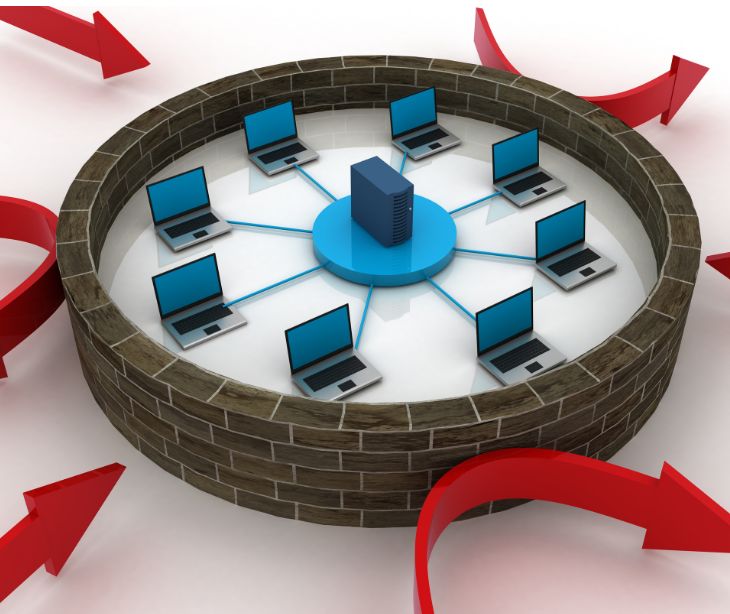
Deep packet inspection is a form of network packet filtering that looks at the data sections of a packet as it passes by an inspection point to manage and possibly block specific types of traffic.
What is deep packet inspection?
According to a study published in IEE Explore, “DPI rely on comparing to part of payload and signature (IP header). It compares them with known signatures to decide if the packer is harmful (similar to any of the attacks database signatures) and delete it or pass it through the network flow.”
When data is sent over the internet, it's broken down into smaller pieces called packets. Packet inspection, in general, is like a checkpoint for data traveling across a network. Deep Packet Inspection (DPI) is like a detailed examination of data being sent over the internet.
DPI doesn't just look at the packet's basic details like where it's going; it goes deeper, checking its actual content. It is similar to reading a letter, not just checking the address on the envelope. DPI can understand what kind of information is being sent and make sure it's all good and safe.
DPI v traditional packet inspection methods
Usually, standard inspection just looks at the outer part of data packets, like where they're going and where they came from. DPI, on the other hand, really digs into the details. It opens up the packets and looks closely at the content inside. It can understand what kind of information is being sent, not just where it's headed.
The deeper check helps manage the network and keep it safe, as DPI can spot specific apps, users' activities, and even security risks that normal inspection methods would miss. In short, DPI is like having a detailed x-ray of data packets, while standard methods are more like a basic security check.
See also: HIPAA Compliant Email: The Definitive Guide
Area’s where DPI is applied
- Network security: DPI is crucial in identifying and preventing cyber threats like viruses, malware, or hacker attacks. It's like a security guard, checking the content of network traffic to catch anything harmful.
- Internet Service Providers (ISPs): ISPs use DPI to manage network traffic efficiently, ensuring smooth internet service by prioritizing certain types of data or limiting bandwidth for heavy users.
- Corporate networks: In business environments, DPI helps enforce network policies, like restricting access to non-work-related sites or ensuring company data remains secure.
- Government surveillance: Governments sometimes use DPI for monitoring internet traffic to detect illegal activities or enforce internet regulations.
- Traffic shaping and management: DPI helps in shaping and balancing the load on a network, making sure critical services get the bandwidth they need.
- Quality of Service (QoS): For services like VoIP and streaming, DPI ensures high-quality transmission by prioritizing these data types over less time-sensitive traffic.
- Content filtering: Schools or workplaces might use DPI to block access to inappropriate websites, maintaining a focused and safe online environment.
What are the key functionalities of DPI in healthcare?
- Protecting patient data: DPI ensures sensitive patient information is secure and not subject to unauthorized access or cyber threats.
- Compliance with regulations: It helps healthcare providers comply with strict regulations like HIPAA by monitoring and controlling data flow.
- Managing network traffic: DPI optimizes the healthcare network's performance, ensuring applications get the bandwidth they need.
- Detecting malware and cyber threats: It identifies and blocks malware or suspicious activities that could compromise healthcare systems.
- Enhancing telemedicine: DPI can prioritize telemedicine traffic, ensuring reliable and high-quality video consultations.
- Securing IoT devices: It monitors and secures data from Internet of Medical Things (IoMT) devices like patient monitors and wearable health gadgets.
- Facilitating research data exchange: DPI aids in safely and efficiently transferring large research data sets across healthcare networks.
See also: Types of firewalls
How does the Hurst parameter enhance DPI’s effectiveness?
The Hurst parameter is a tool used to understand patterns in data, especially in time series analysis. The Hurst parameter helps determine whether these patterns follow a trend or are random. It boosts the effectiveness of DPI by giving it a sharper eye for detail. Using the Hurst parameter can more accurately differentiate between normal and unusual data patterns. This means it's not just looking at what data is being sent, but also how it's being sent over time. Think of it as DPI gaining the ability to notice if someone's regular network walk suddenly turns into a suspicious run.
See also: Choosing a firewall for a healthcare organization
FAQs
What is advanced threat detection?
A security solution that uses techniques and technology to mitigate threats that traditional security means miss.
What are matching algorithms?
A computational technique used to pair or compare data sets or elements based on specific criteria.
What are DPI challenges?
Issues such as user privacy, managing high computational demands, and keeping up with varying and encrypted traffic patterns.
Subscribe to Paubox Weekly
Every Friday we'll bring you the most important news from Paubox. Our aim is to make you smarter, faster.



